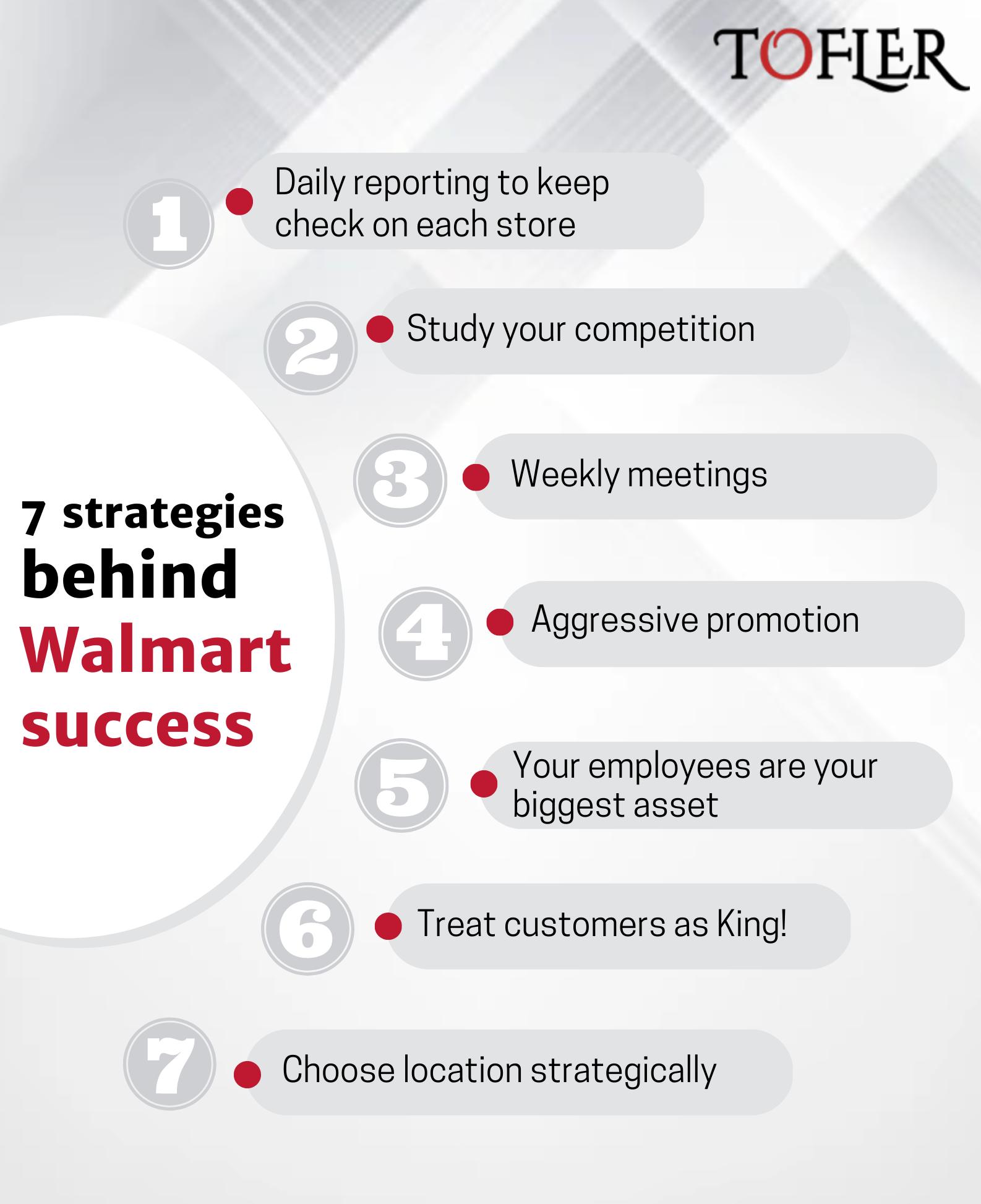Walmart is one of the most successful and influential companies in the world. It is the largest retailer, employer, and private company in the US, and the largest company by revenue in the world. It has more than 10,500 stores in 24 countries, serving over 220 million customers every week. It has annual revenues of $573 billion, and a market value of $392 billion. It has also returned increased dividends to shareholders for 49 consecutive years.
In this blog post, we will explore the journey of Walmart from a small town store in Arkansas to a global giant, inspired by the book Made in America by its founder Sam Walton.

The Beginnings of Walmart
Sam Walton was born in 1918 in Kingfisher, Oklahoma. He grew up during the Great Depression, and learned the value of hard work, thrift, and customer service from his parents. He graduated from the University of Missouri with a degree in economics, and joined J.C. Penney as a management trainee in 1940. He left the company after three years to join the army during World War II.
After the war, Walton decided to start his own retail business. He borrowed $20,000 from his father-in-law and bought a Ben Franklin variety store in Newport, Arkansas. He applied his principles of low prices, high volume, and friendly service to his store, and soon increased its sales from $80,000 to $225,000 a year. However, he lost his lease after five years, and had to sell his store.

Walton did not give up. He moved to Bentonville, Arkansas, and opened another Ben Franklin store with his brother Bud. He also experimented with a new concept of discount retailing, which offered lower prices than traditional department stores by cutting costs and margins. He opened his first discount store called Walton’s Five and Dime in 1950.
In 1962, Sam Walton decided to expand his discount store concept to a larger scale. He opened his first Wal-Mart Discount City store in Rogers, Arkansas, with two more to follow two years later. He wanted to offer quality merchandise at everyday low prices to customers in small towns and rural areas that were underserved by other retailers. He also wanted to create a culture of partnership and respect among his associates, suppliers, and customers.
Walton had a vision of creating a chain of discount stores across the country. Walton overcame these challenges by being innovative, persistent, and adaptable. He used his own trucks and planes to transport goods from his distribution centers to his stores. He negotiated directly with manufacturers to get better deals and eliminate middlemen. He adopted new technologies such as bar codes and satellite systems to improve inventory management and communication. He also diversified his product portfolio to include groceries, pharmacy, optical, jewelry, auto service, and more.
The 7 strategies behind Walmart success:

Walmart has achieved remarkable growth and success in the past 60 years. However, it is not resting on its laurels. It is looking ahead to the future with a vision of becoming “the trusted partner for everyday living – powered by people”. To achieve this vision, Walmart has set some goals and strategies for the future. Some of these goals and strategies are:
1. Daily reporting: Sam Walton believed that daily reporting was vital for monitoring and improving the performance of his stores. He used various methods to collect and share data on sales, inventory, expenses, margins, and profits. He also used satellite systems to connect his stores and headquarters, and bar codes to track his merchandise. He used daily reporting to identify problems, opportunities, and best practices. He also used daily reporting to motivate his associates and managers by ranking them against each other and rewarding them for their achievements.
2. Study your competition: Sam Walton was always eager to learn from other businesses and competitors. He visited hundreds of stores every year, studied their operations, products, prices, and strategies, and adopted the best practices that suited his business. He also learned from his own mistakes and failures, and improved his performance.
3. Weekly meetings: Sam Walton believed that weekly meetings were crucial for sharing information, ideas, and feedback among his managers and associates. He held weekly meetings every Saturday morning at his headquarters in Bentonville, Arkansas, where he invited managers from all his stores to attend. He used these meetings to review the sales and performance data of each store, discuss the problems and opportunities, recognize the achievements and contributions, and brainstorm new strategies and innovations. He also used these meetings to create a fun and exciting atmosphere, by playing music, wearing costumes, organizing contests and games, and making bets and challenges. He also encouraged his managers to hold weekly meetings at their own stores with their own associates, following the same format and principles.
4. Aggressive promotion: Sam Walton believed that product promotion was essential for attracting and retaining customers. He used various methods to promote his products, such as advertising, word-of-mouth, discounts, coupons, giveaways, and special events. He also created a fun and exciting atmosphere in his stores, by playing music, using loudspeakers, wearing costumes, and organizing contests and games. He also involved his associates and suppliers in his promotional activities and encouraged them to interact with customers and demonstrate the products.
5. Empower your associates: Sam Walton treated his associates as partners, not employees. He shared his vision, goals, profits, and success with them. He also empowered them to make decisions, take risks, and be creative. He valued their opinions and feedback, and recognized their contributions.
6. Treat the customer as king: Offer everyday low prices, Sam Walton’s main strategy was to offer quality merchandise at everyday low prices to his customers. He achieved this by cutting costs and margins, negotiating directly with manufacturers, eliminating middlemen, using his own distribution network, and selling in high volumes.
Sam Walton’s ultimate goal was to satisfy his customers and make them happy. He offered them a wide selection of products, friendly service, convenient locations, easy returns, and guarantees. He also listened to his customers and responded to their needs and feedback
7. Choose location strategically: Sam Walton believed that location was a key factor for the success of his stores. He focused on serving customers in small towns and rural areas that were ignored by other retailers. He thought that if he offered prices as good or better than stores in cities that were four hours away by car, people would shop at home. He also chose locations that were convenient, accessible, and visible to his customers.
____________________________________________________________
Watch this video, we have brought up insightful points about Walmart’s success from the book “Made in America” by Sam Walton.
The Growth of Walmart
By 1970, Walmart had grown to 38 stores with sales of $44 million. It also became a publicly traded company on the New York Stock Exchange. Walton used the capital raised from the stock market to fund his expansion plans. He also reinvested most of his profits back into the company.
By 1980, Walmart had grown to 276 stores with sales of $1.2 billion. It also became the largest retailer in Arkansas and Missouri. It also introduced its first supercenter concept, which combined a discount store with a full-service supermarket under one roof.
By 1990, Walmart had grown to 1,528 stores with sales of $26 billion. It also became the largest retailer in the US and opened its first international store in Mexico City. It also launched its own private label brands such as Sam’s Choice and Great Value.
By 2000, Walmart had grown to 4,099 stores with sales of $165 billion. It also became the largest private employer in the US and opened its
Here is the completed information:
By 2000, Walmart had grown to 4,099 stores with sales of $165 billion. It also became the largest private employer in the US and opened its first international store in Mexico. It also developed new retail formats, such as Sam’s Club discount warehouses and Wal-Mart Supercenters, which combined grocery and merchandise stores.
Walmart is a remarkable example of how a small town store can become a global giant by following a simple but powerful philosophy: to offer quality merchandise at everyday low prices to customers in small towns and rural areas. Walmart has shown that with trust, partnership, innovation, leadership, and culture, anything is possible. We hope you enjoyed reading this blog post and learned something new about Walmart and its success story.






